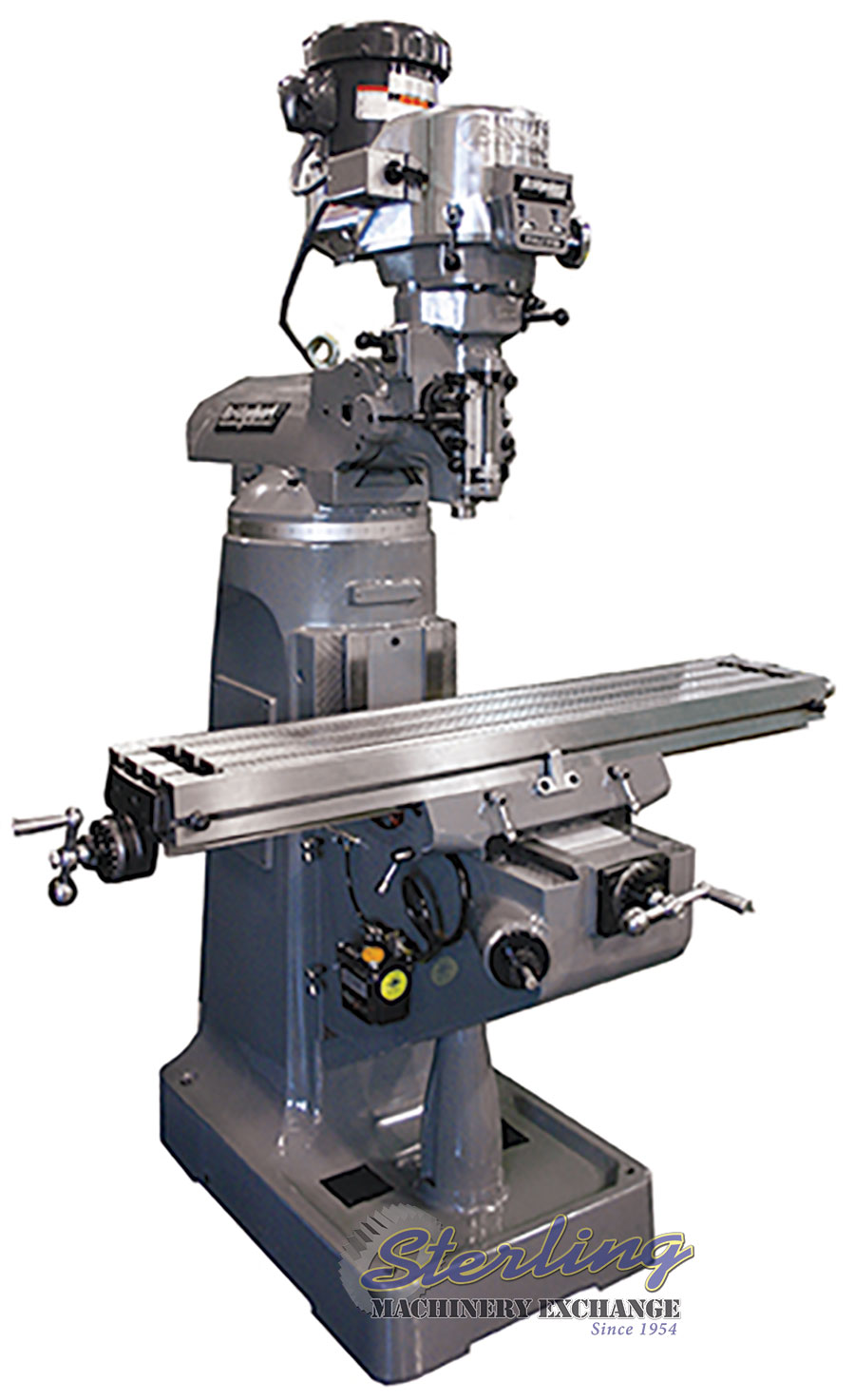Dimension Table for T-Slots, Bolts, and Nuts per. American National Standard T-Slots ANSI/ASME B5.1M-1985. Width of tongue used with the T-Slots will be found in the complete standard, B5.1M. Used for setting up work on planers, shapers, milling machines or similar applications. Heads sized to fit in table slot giving more bearing surface. Cannot twist or jam in slot. Upset forged from AISI 1045 for strength. Unified Coarse Threads. Black oxide finish.
Product Description
The Pro Mill Stop by Edge Technology can be mounted on any available T-slot anywhere along the milling machine table allowing it to accurately locate a workpiece for any type of setup. It is designed to keep the stop rod square to the work piece throughout the entire range of motion. This configuration provides a more consistent locating surface for increase part accuracy. The base of the unit is also keyed to the T-slot of table for increased consistency. After locating the workpiece the arm of the Pro Mill Stop can be rotated out of the way for total cutter clearance. The arm can then be accurately repositioned for repeat setup.

Protected by one or more US patents.
key features
• Versatile design allows the 1/4' hardened stop rod to be quickly and accurately positioned.
• Stop rod stays parallel to the milling machine table so workpiece will contact rod face squarely for increased accuracy.
• Lever arm can be rotated out of the way for cutter clearance and accurately relocated for repeat setup. (loosening and retightening of screw is required)
• Large 1/2'-13 bolt used to rigidly attach lever arm to base.
• Non-marring 1/4'-20 nylon tip set screw used to secure stop rod mount without damage to lever arm.
• Non-marring 1/4'-20 flat point set screw used to secure stop rod without damage.
• Base is keyed with table T-slot to keep unit square to work piece.
• Sized to fit 5/8' T-slot. T-nut included.
So far, milling machine has been our major topic of discussion on this website. It was explained as the process of machining using a rotary cutter to remove material by advancing a cutter into a workpiece. An engineering workshop is not complete without this machine due its suitability on some operations like T-slot, plain, face, side etc. milling operation.
Today we’ll be looking at the various milling machine component and their functions
Read: Everything you need to know about milling machine
Contents
- 1 Milling machine parts
Milling machine parts
The following stated below are the milling machine parts:
Base:
This milling machine part is the foundation of a milling that carries the weight of the machine and move it to the ground. All component is mounted on the base. This base is made of cast iron due to its high compressive strength.
Column:
The column is vertically mounted on the base as its supports the knee, table, etc. it also works as housing for all the other driving member. This column is a hollow member that contains driving gears and sometimes motor for the spindle and the spindle and the table.
Knee:
The knee is a cast iron that supports the saddle and table as its enclosed all gear mechanism. It is attached to the column in a dovetail way. The knee is design to be adjusted by a vertical positioning screw (elevating screw). This screw helps to adjust the knee up and down by raising or lowering the lever either by a power feed or by hand.
Saddle:
This machine part is located between the table and the knee as its serve as an intermediate part between them. This move transversely to the face of column which is to provide motion in horizontal direction to the workpiece. It is also made of cast iron.
Read: Everything you need to know about drilling machine
Table:
The table is situated over the knee in order to holds the workpiece during the process. it is made of cast iron and has t-slot cut on it. This provides vertical motion by moving the knee up and down and provides horizontal motion by the feed screw provided by the saddle.
Overhanging arm:
The milling machine component is used to fastened arbor support. It may consist of one or two cylindrical bars that slide through the holes in the column. It is also made with cast iron.
Spindle:
The spindle is the part of the machine which holds the tool in place, this spindle offers rotary motion and drive for arbors, cutters, and attachment used on the machine.
Arbor:
The arbor serves as an extension part of the spindle in a horizontal mill machine. It is fitted to the spindle whenever it’s needed. The arbor holds the tool and moves it in the correct direction.
Milling Machine T-slot Guide
Arbor supports:
Milling machine generally have two types of arbor supports, the first one has a small diameter bearing hole, 1-inch in maximum diameter, and the second one has a large diameter bearing hole of about 23/4 inches. This milling part contains an oil reservoir which aid the lubrication of the bearing surfaces. This arbor support is use only in the horizontal types of milling machines and it’s clamped anywhere on the overarm.
Read: Understanding lathe machine
Milling head:
The milling head is the upper part of a vertical mill machine. It consists of spindle, driving motor and other controlling mechanisms.
Ram:
The milling machine part can move transversely (in and out) on the column by a hand level. One end of the arm is attached to the column and the other ends on the milling head.
That is it for this article, milling machine parts. i hope you enjoy the reading, if so, kindly comment and share. thanks!